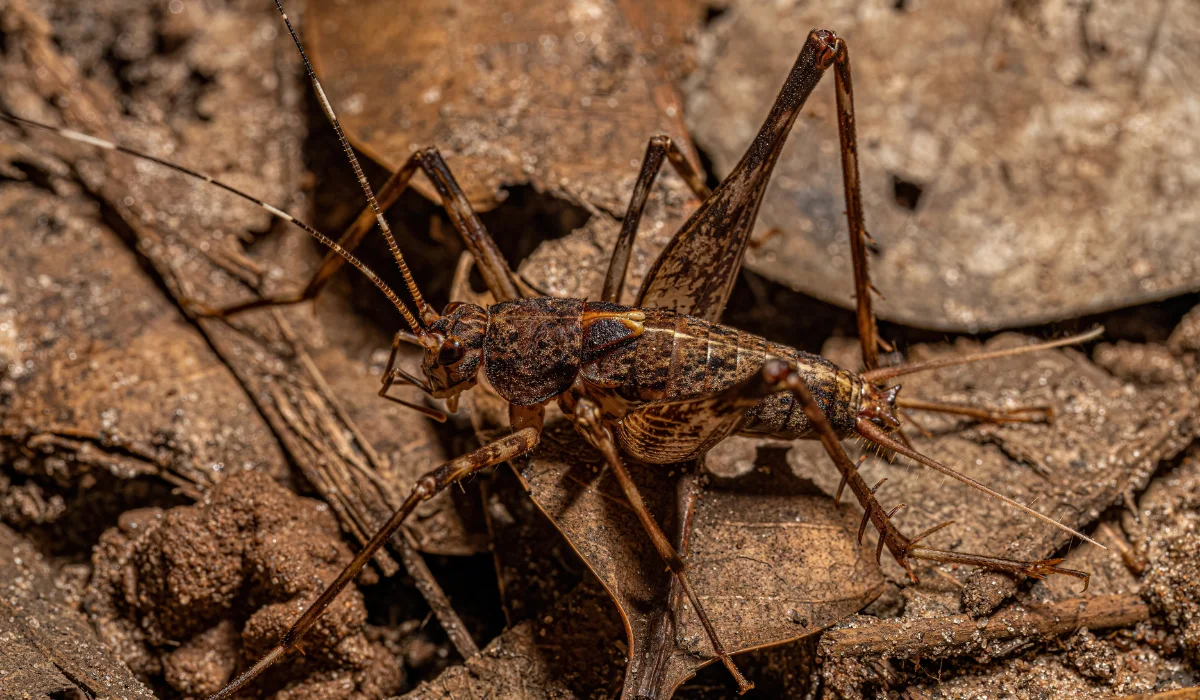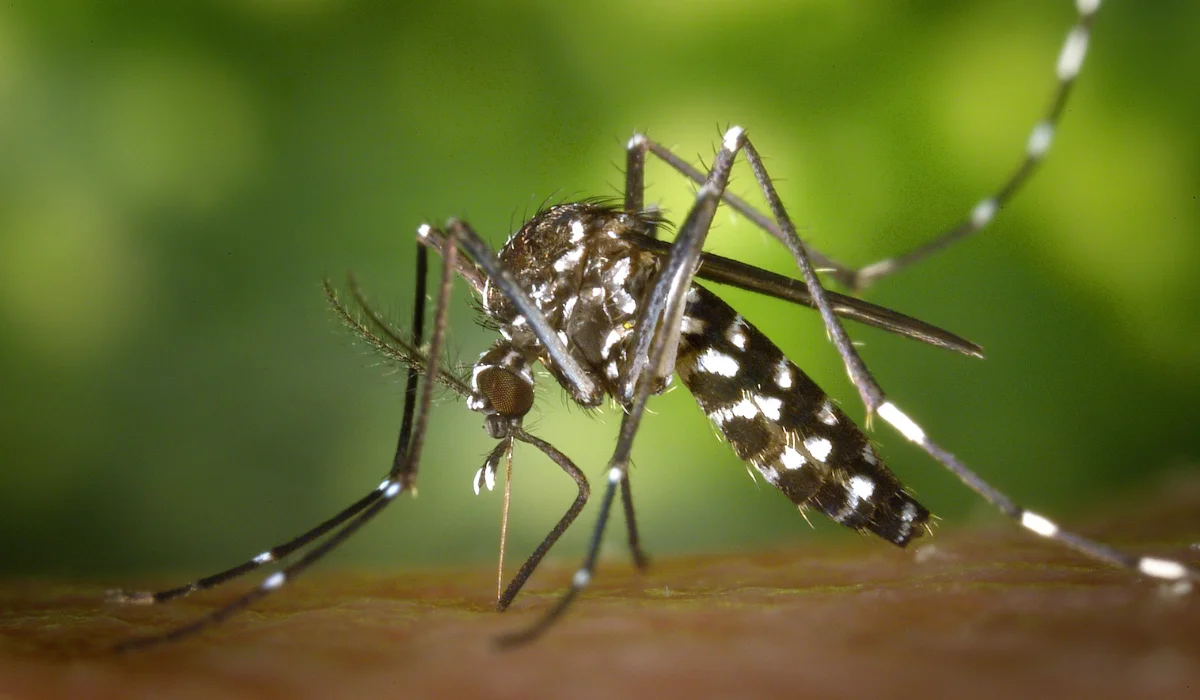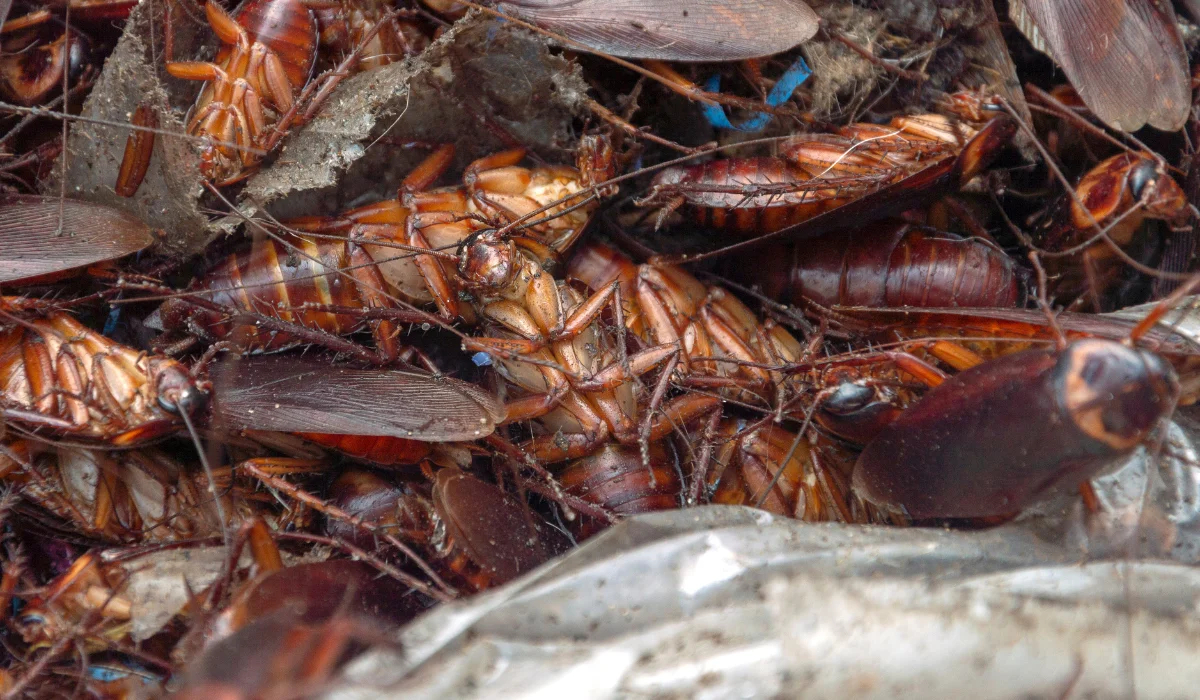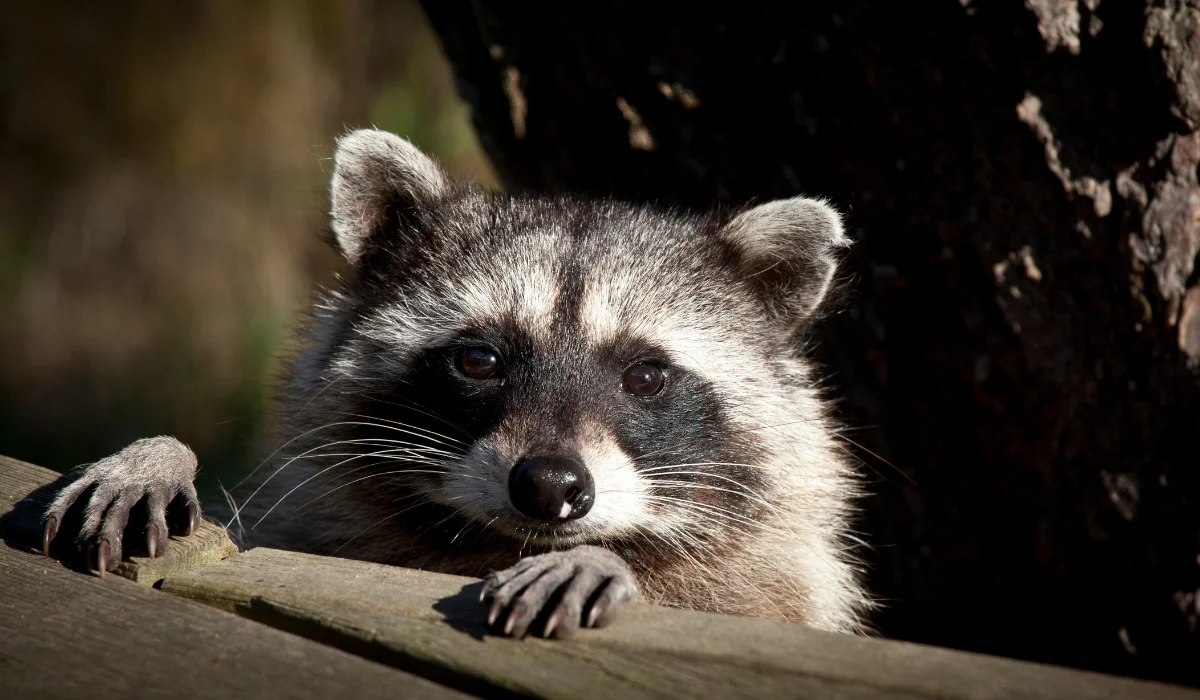If you’ve ever walked into your garage or peeked into the crawl space only to see a humpbacked insect with long antennae and jumping legs, you’ve likely met a spider cricket, also known as a camel cricket or spricket.
These jumpy bugs are a common sight in damp areas across Louisiana. But are they dangerous to your home?
Let’s take a closer look at what spider crickets are, why they love South Louisiana, and what you should do if you start seeing them too often.
Key Takeaways
• Spider crickets aren’t aggressive, but they can damage belongings and attract predators.
• These pests prefer moist environments, such as crawl spaces, damp basements, and garages.
• Infestations are more common in Louisiana due to the humidity and year-round warmth.
• Long-term prevention includes moisture control, sealing entry points, and expert pest management.
What Exactly Are Spider Crickets?
Spider crickets are part of the Rhaphidophoridae family and belong to the order Orthoptera, which includes grasshoppers and katydids. They get their nickname from their spider-like appearance and long back legs that allow them to jump great distances. Their bodies are humpbacked, with long antennae that help them navigate in low light.
Unlike regular house crickets, spider crickets don’t chirp. That might sound like a good thing, until one jumps at your face.
These insects are often referred to as camel crickets or camelback crickets due to their distinctive arched shape. In the South, “spricket” is the nickname that tends to stick.
Are They Dangerous?
Spider crickets don’t bite, sting, or carry disease, but that doesn’t mean they’re harmless.
They feed on just about anything organic, including cardboard, clothing, upholstery, and even the remnants of dead insects like cockroaches. That makes them a quiet but destructive pest. Left unchecked, they can damage stored items and insulation, particularly in areas where moisture is already a concern.
A single female spider cricket can lay dozens of eggs at a time, and with the right conditions, infestations can spread quickly in just a few weeks.
Their presence can also invite other pests into your home. Spider crickets are preyed upon by centipedes, spiders, and even rodents. Therefore, an infestation can escalate into a larger pest problem if not addressed promptly.
Why Are Spider Crickets So Common in Louisiana?
Louisiana’s climate creates the perfect environment for spider crickets. These insects prefer moist environments and tend to inhabit crawl spaces, garages, damp basements, and other areas with limited airflow.
Cities like Baton Rouge, Houma, and Thibodaux often experience higher spider cricket activity due to the consistently high humidity. Any home with poor ventilation, leaky pipes, or cluttered storage is at greater risk, especially if cardboard boxes and fabric are left on the floor in a damp area.
Homes close to wooded areas, lakes, or bayous are more likely to have problems, since cave crickets and their cousins often migrate from outside into homes when the weather shifts.
Signs You Might Have a Problem
Spider crickets are nocturnal, so you might not notice them right away. But there are clues to look for:
You may see damaged materials in storage boxes or odd-looking droppings that resemble mouse droppings, but without the smell. Homeowners sometimes report hearing movement at night in walls or crawl spaces, especially in homes built on piers.
And of course, spotting multiple spider crickets jumping around your basement or laundry room is a sure sign that more are hiding nearby.
What Attracts Spider Crickets Indoors?
These insects come indoors in search of food and shelter. They’re searching for food sources and a suitable habitat. Common attractants include:
• Stored fabric, like curtains or blankets
• Cardboard and paper products
• Moist wood and damp insulation
• Other dead insects, like cockroaches
If you have any of these in a basement or garage with poor drainage or ventilation, spider crickets will find them.
How To Keep Them Out
The most effective long-term strategy starts with controlling moisture. A dehumidifier can make a big difference in crawl spaces and damp areas. Keeping storage off the floor and using plastic bins instead of cardboard helps reduce the risk of food sources.
Seal entry points using caulk or weather-stripping around doors, vents, and foundation gaps. Ensure your garage door has tight seals, because spiders and crickets can easily sneak under if there’s space.
If you already have an infestation, placing sticky traps or glue traps in corners and near walls can help catch the pests. A vacuum cleaner also works for quick removal, though it won’t solve the root problem.
When To Call In the Pros
If you’re seeing spider crickets regularly or discovering damage to your stored items, it’s time to get help. A licensed pest control provider can assess your home’s vulnerabilities and recommend a custom treatment plan.
LaJaunie’s Pest Control serves the South Louisiana region with same-day service, and we’ve seen our fair share of spricket invasions in places like Slidell, Marrero, and Metairie.
Please give us a call, and we’ll respond quickly to help solve the problem. Whether they’re in your crawl space, garage, or attic, we know how to keep them out and help you stay pest-free.
FAQs
Do spider crickets bite humans?
No, spider crickets don’t bite. Their primary defense mechanism is jumping directly toward threats, which can be unsettling but isn’t harmful.
What’s the best way to get rid of spider crickets?
The best approach includes moisture control with a dehumidifier, removing food sources, sealing entry points, and using glue traps in known hotspots. For larger issues, professional pest control is the most effective solution.
Why are spider crickets called sprickets?
They’re called sprickets because they resemble both spiders and crickets. With long legs, a humpbacked shape, and no chirp, they’ve earned that nickname among homeowners across the South.
 By: LaJaunie's Pest Control
By: LaJaunie's Pest Control 



